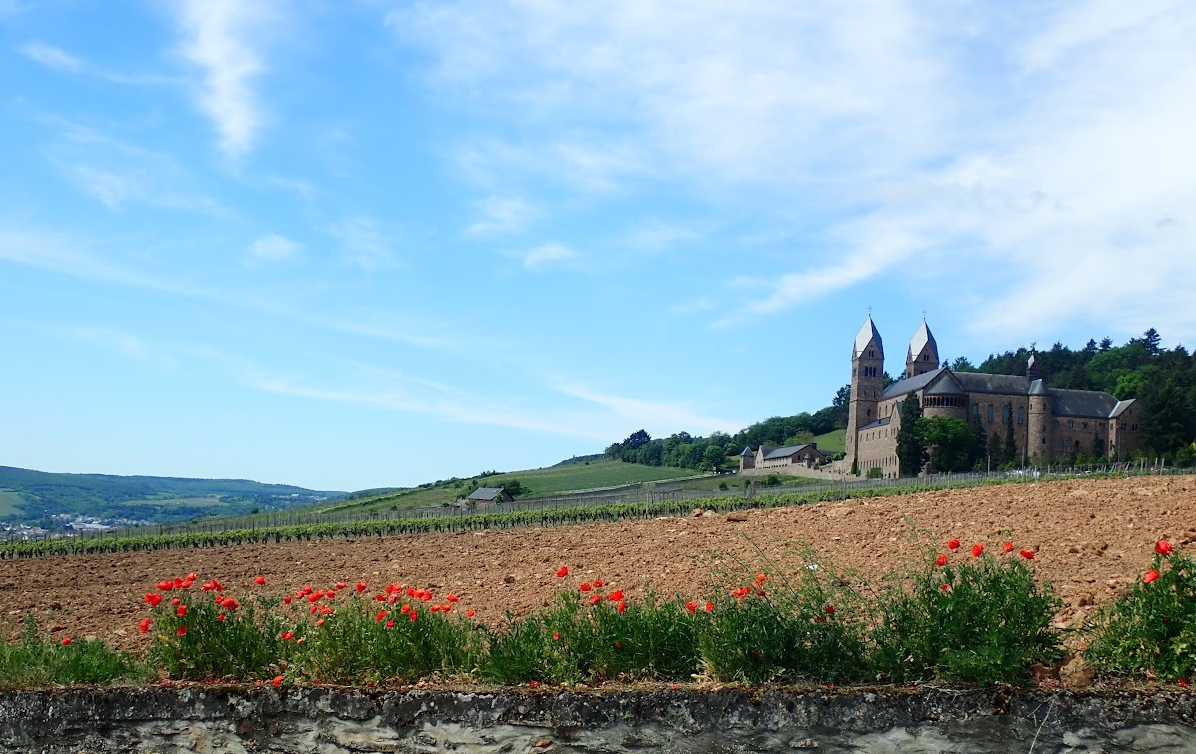By Christian Jenkins
Hildegard of Bingen was a mystic born in 1098 who had visions from God which were verified by Pope Eugenius during her lifetime.
Her visions were written down in her first and most famous work Scivias which she did not write, but merely wrote down what the Lord told to her during these visions. This was the same with her music which is still performed and recorded around the world today which has a simple line of song meditating on different prayers and scripture and has shaped our understanding of music at that time. Her moral play Ordo Virtutum (Order of the Virtues) is the oldest surviving play and her letters, works, and music provide us a glimpse of cloistered life in the Middle Ages.
I first encountered St Hildegard in 2022 when I was cycling through Germany. Taking the ferry across the River Rhein from Bingen to Rudesheim, you can’t help but admire the scenery and notice the imposing abbey at Eibingen on the top of the hill (Hildegard’s second abbey foundation), surrounded by grape vines creeping across the side of the valley. Her original convent at the Rupertsberg was demolished in the 19th century to make way for the railway, however her writings and relics were carefully guarded by the nuns throughout the periods of European upheaval to the present.
A small, unimposing and rather bland (unlike Hildegard herself) church houses her reliquary, but the experience was like no other and she has remained as my Saint and companion ever since.
Looking down to the river from the top of the abbey, little has changed except the railways and roads which now sweep down by the river. However, this was where Hildegard founded two abbeys for nuns, experienced her visions, wrote her works, preached, composed music, was briefly excommunicated, and compiled books on natural health and natural remedies (a lot of which is now backed up by mainstream science).

She often starts her works humbling herself as a poor woman of God with a frail frame, a humility which emphasises her point that God is the Lord and creator of all, not humans. Whilst she is a great saint and a doctor of the church, she always emphasises the point that her visions and music are to lead people to the Almighty and not to her.
Hildegard’s music can be described as ‘ethereal’, ‘other worldly’, or intensely spiritual. She claimed that these chants were given to her in a series of visions, and they align with St Augustine and St Thomas Aquinas’ views on ‘celestial music’, music in harmony with the rotation of the planets and the energies of the universe, music which is in union with creation. By making use of certain intervals, motifs, and notes, the music creates a sense of calm which resonates with all who hear it.
On this years feast of St Hildegard of Bingen, find some of her music on YouTube and listen to it in a moment of calm, or maybe have it quietly playing in the background as you pray your rosary.
Saint Hildegard of Bingen, Ora pro nobis
Christian Jenkins is a professional singer who trained at the Royal Welsh College of Music. He was part of the music team at the Diocesan Lourdes Pilgrimage and regularly sings with the Southwell Consort at Corpus Christi Maiden Lane, and at St Dominic’s Priory, Haverstock Hill. He has performed a number of Hildegard’s works and is hoping to make another cycling pilgrimage to Bingen in 2025.
